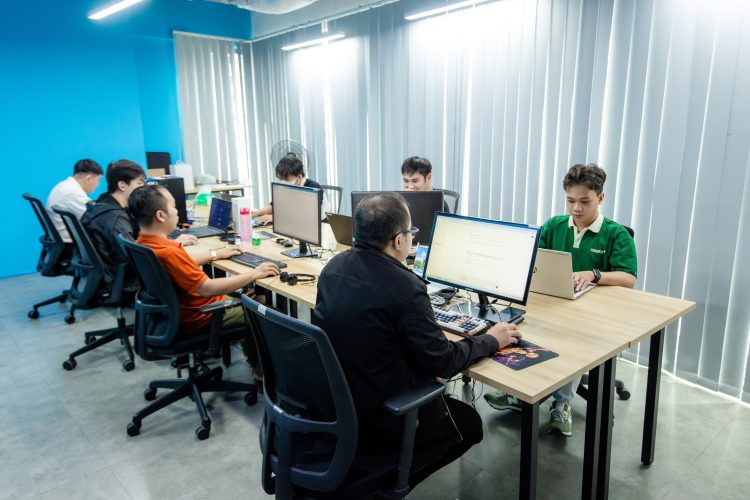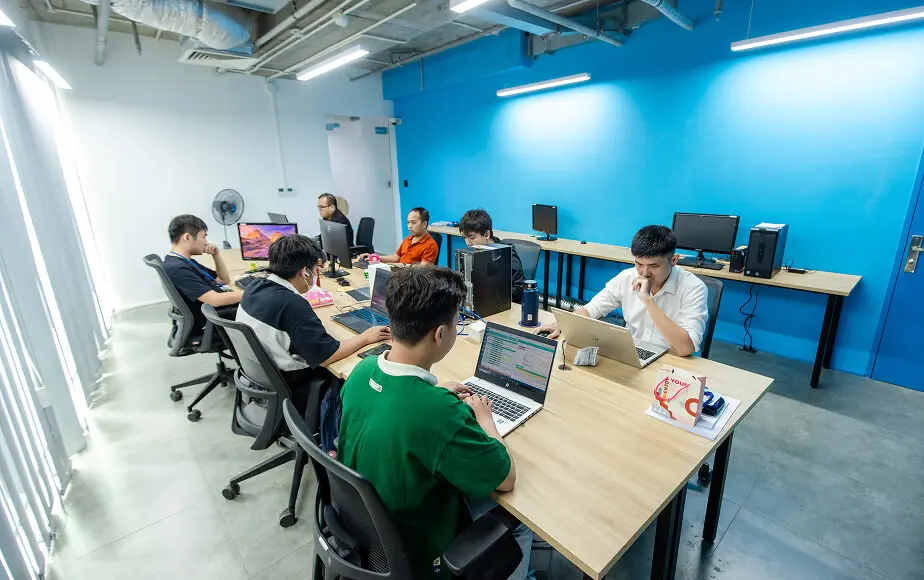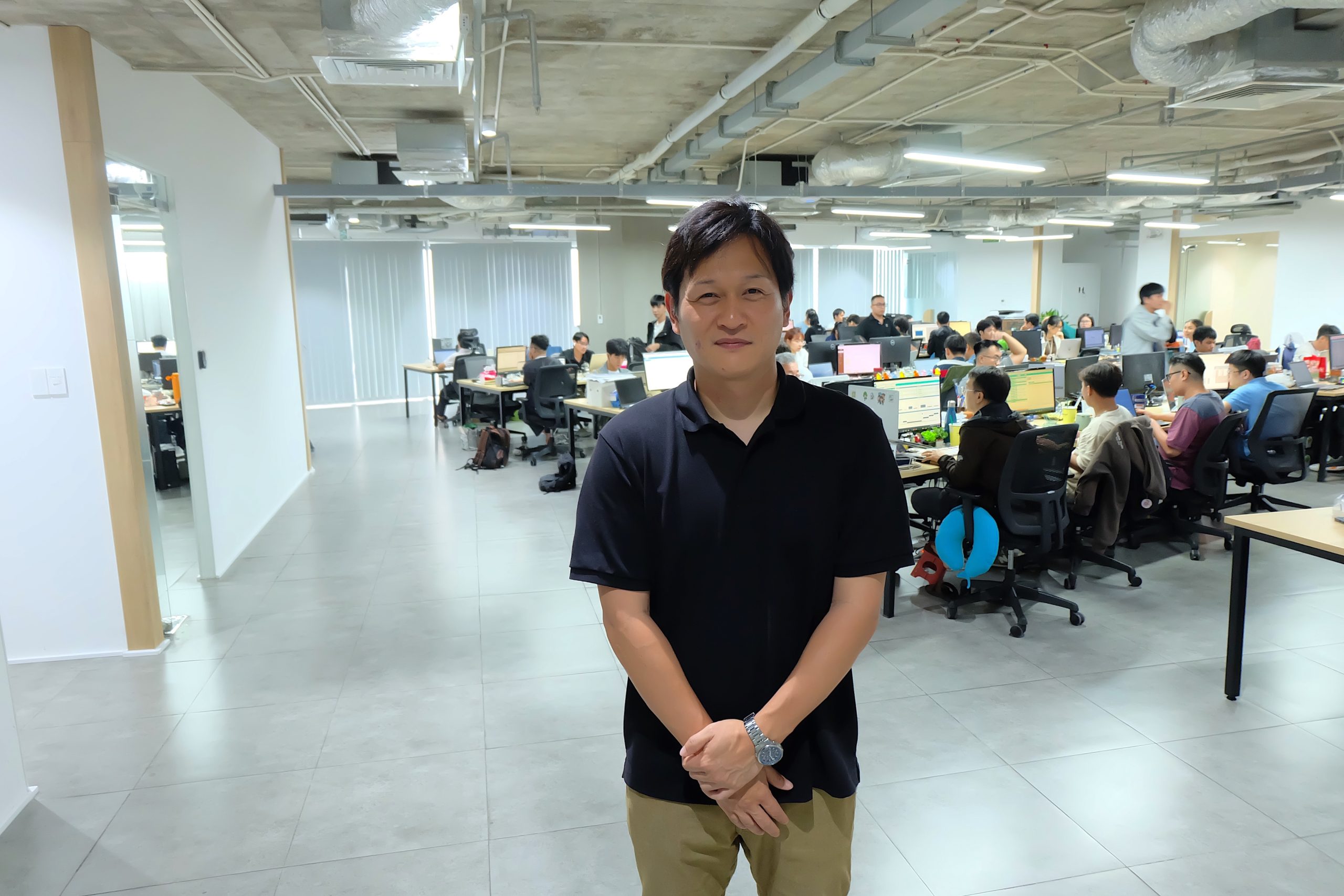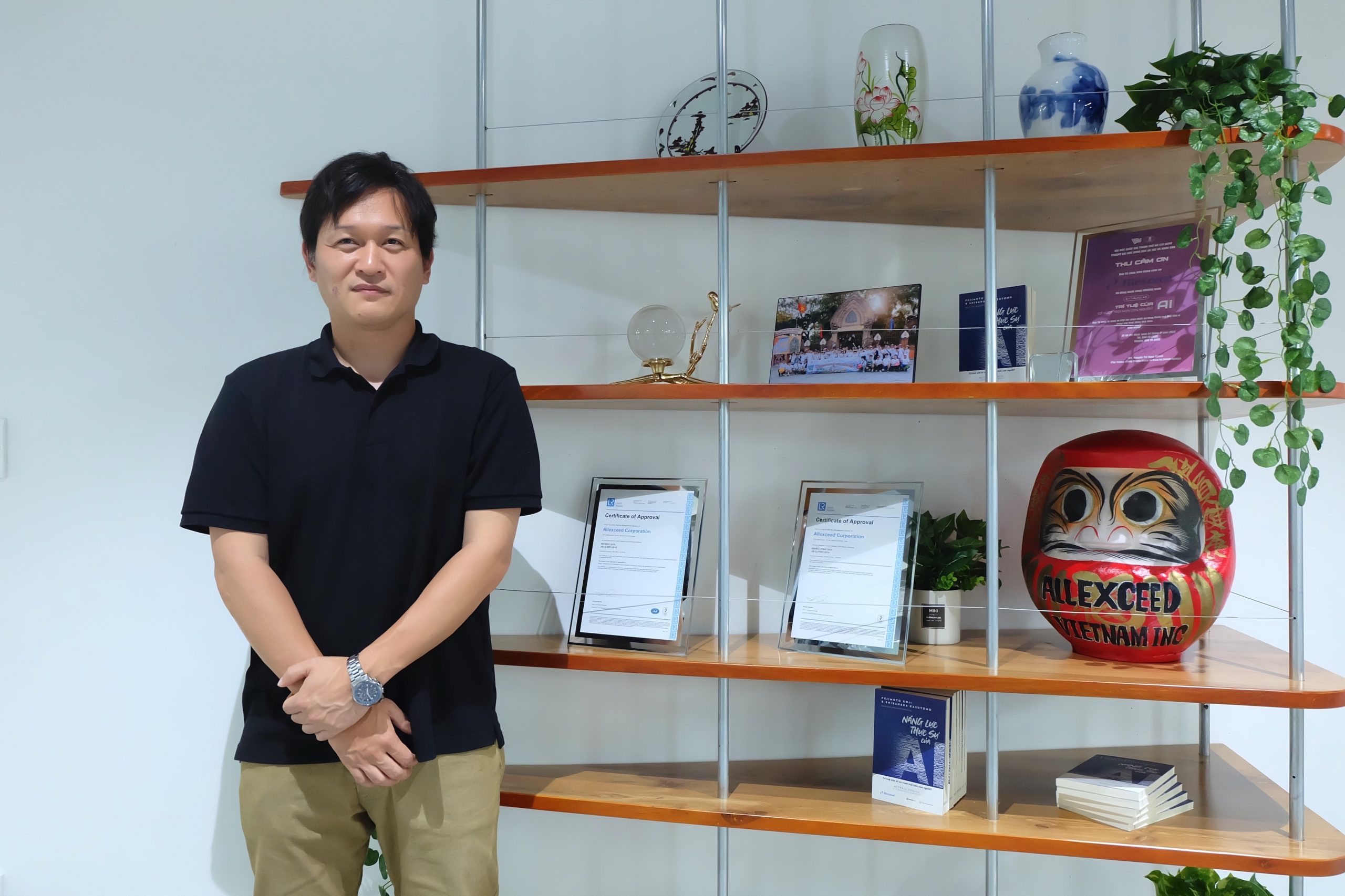2025/10/01
Share
Do we even need the word ‘offshore’ anymore? Building a development model with ALLEXCEED VIETNAM (Part 1)

This time, we interviewed Mr. S, who has extensive experience in offshore development projects with Allexceed Vietnam, about the initiatives to date, how trust was built, and expectations for the future.
— First, could you tell us about your company and yourself, Mr. S?
Our company handles system development and digital strategy, promoting digital initiatives across multiple fields such as information solutions for group companies, security, education, and healthcare.
I have managed development of web systems, smartphone applications, and migration of legacy systems.
Because development is a critical area that affects operations across the entire group, we focus on quality, speed, and communication as we drive projects day by day.
Reliable communication in Japanese was the deciding factor
Please tell us the background of starting offshore development.
We originally had hundreds of engineers in-house and a development setup that could be completed internally, so our default was to handle everything ourselves.
However, since around the 2010s, we began offshore development to reduce costs.
At that time, the price gap between Japan and Vietnam was quite large, which became the trigger.
In practice, we compared Vietnam and China, and we are now conducting offshore development in both countries.
What led you to engage Allexceed Vietnam from there?
In fact, before commissioning your company, we had been conducting offshore development with a local Vietnamese system development company.
However, while developing, we felt several issues and became interested in how other companies were running offshore.
We also wanted to compare offshore engagements with Vietnamese firms and with Japan-affiliated firms, which led us to consider your company as one candidate.
Among many offshore vendors, what was the decisive factor for choosing Allexceed Vietnam?
Initially, we were looking at several Japan-based development companies, and the biggest reason was that your company could communicate well in Japanese.
We felt reassured because a Japanese manager was actively involved in supporting the engagement.
Furthermore, your IT Communicators performed well, and we were able to communicate properly.
This is somewhat inevitable, but in offshore development there are many times when our intent is not conveyed and conversations don’t align.
However, your IT Communicators confirmed what was conveyed each time, so such situations were rare.
That said, at the very beginning, there were times when it was unclear whether we were making a report or seeking consultation, which caused difficulties; this has now improved considerably.
Clearly saying, “let me pause to translate,” also made it easier for us to work overall.
After considering various aspects, was peace of mind the biggest factor?
Yes.
Of course, quality and cost are also important, but at the beginning it was that peace of mind and the ability to communicate solidly in Japanese.
The actual development structure
Please tell us about the actual development setup with Allexceed Vietnam.
There are many parts we can internalize.
Therefore, we clearly separate the projects we handle in-house and those we outsource to your company.
For example, projects that “require a certain number of people,” have a “consolidated development scope,” or are “migration-type projects,” tend to be outsourced.
Conversely, projects with short deadlines or complex specifications are often handled in-house.
In terms of roles, we basically handle the upstream processes (requirements definition and high-level design), and ask your company to take care of the development phase from detailed design onward.
Of course, depending on the project, we sometimes receive design-level feedback based on your technical expertise.
Any projects that left a particular impression?
The most impressive was a migration project accompanying the EOL of our internal servers.
It was a project to migrate the servers we operated to new servers; targeting more than 200 PHP systems, we simultaneously refreshed servers and upgraded PHP versions—a very challenging project.
Ultimately, it became a long-term project of two and a half years with a total scale of about 300 person-months.
The work was “heavy,” akin to repainting the company’s foundation in one go, and your company covered a wide scope from technical verification and implementation to migration and testing.
In such large projects, small gaps in understanding can lead to big mistakes, and it was impressive that your team absorbed those gaps well.
For such large projects, it is extremely difficult to procure resources on our own; your capability was indispensable.
Visualizing productivity with regular reports
Was there anything that made development easier?
There are three main points I personally found “easy.”
First, we received regular reporting.
In particular, the “productivity report” was excellent, not just a work report—it clearly visualized achievements versus the previous month and against targets.
By quantitatively understanding the situation, we could discuss areas for improvement—different from normal reports.
With numbers, the narrative is persuasive, and on the ground it turns into motivation to “do even better.”
Instead of just building and being done, you pursued productivity improvements with us, which was very helpful.
IT Communicators who go beyond interpreters and truly accompany the project
The second point is the ease of communication with IT Communicators.
In offshore development, interpretation support plays a very large role, but they didn’t stop at translation; by understanding the background and intent, they organized conversations and facilitated the discussion, which greatly contributed to the smooth progress of the entire project.
In offshore development, meetings tend to become long; they made them smoother and captured key points.
If communication does not go well, development itself becomes difficult and we end up thinking “we should just develop in-house.”
The usability of offshore varies greatly depending on communication quality.
A collaborative stance of thinking together about “how to realize the optimal form”
The third point is flexibility in responding to sudden changes and tight schedules.
In the past, there were cases where the deadline was shortened due to unforeseen circumstances.
Rather than immediately saying “we can’t,” your company considered what adjustments were possible and ultimately met the deadline while maintaining quality.
Especially during periods when multiple projects overlapped at quarter-end, you arranged resources and schedules skillfully, which was very reliable.
Instead of judging by “can or cannot,” your company thought together with us about “how to realize it optimally,” and we feel that this collaborative stance has led to a long-term relationship of trust.
There are not many companies that think that far.
How did you communicate in the development field?
We held regular meetings.
As a cadence, there were weekly manager meetings and management-level meetings; when there was a problem, emergency meetings were set up, and managers from both sides participated.
There were, of course, issues in communication, but there was a system in place to respond when problems occurred.
Therefore, even when trouble happened, we were able to coordinate each time and did not feel that “mistakes were frequent.”
Cultural differences are not just a matter of language.
Approaches such as “proceeding with ambiguity” or “expecting others to read the air,” which might be acceptable among Japanese people, do not apply to cross-border development.
We feel your company understands that well.
Incidentally, besides meetings, we use Teams as a communication tool for daily chats.
Were there any challenges or areas for improvement in development?
Since we proceeded on a trial basis, the lack of a fixed method was an initial issue.
In one project, the workload fluctuated greatly and resources had to be adjusted accordingly, but at the overall project level there were parts that we could not fully handle.
However, as we communicated what we wanted to do and proceeded while receiving proposals for solutions and improvements, the optimal development setup was gradually established.
That said, it is also true that there was significant growth and improvement in terms of resources.
At the beginning of the project, your development team was not familiar with our products and operations, and some parts took time; but as we continued, the speed steadily increased.
In addition, the accuracy of estimates, which was somewhat uneven in the early stages, improved with each project, and in the end we felt that we could predict effort quite accurately.
Through these accumulated improvements, we strongly felt that the quality of offshore development itself improved along two axes:
・higher productivity
・more accurate estimates
Beyond that, we did not feel any major dissatisfaction or a sense of mismatch.




